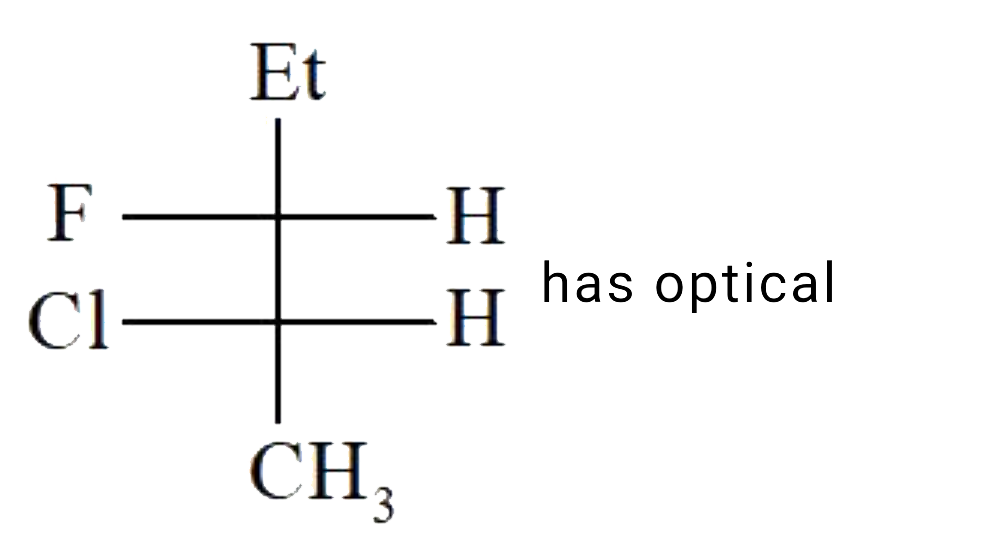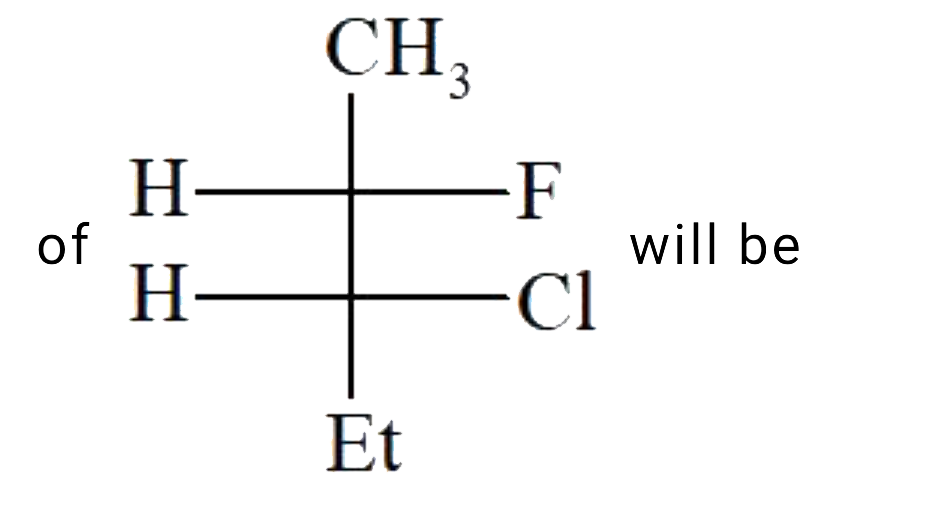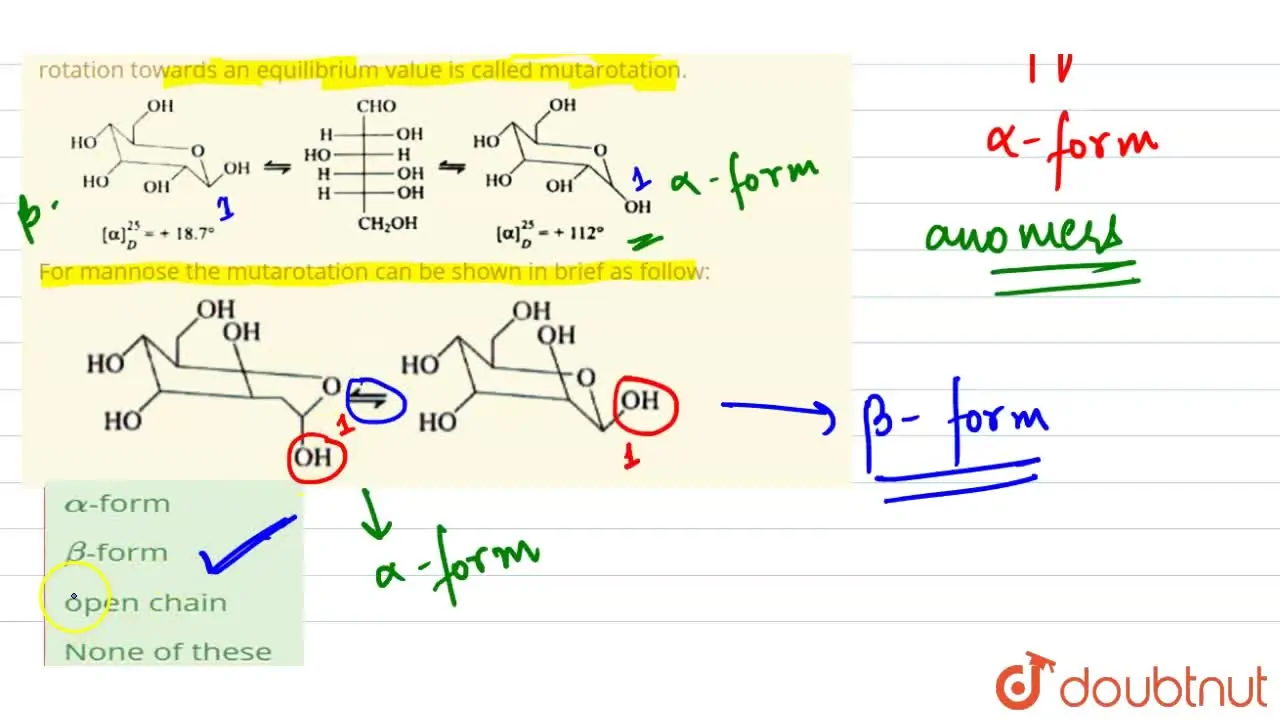D (+) Glucose has melting point 146∘C and specific rotation [α]25D is + 112∘C. Another D(+) Glucose has melting point 150∘C and specific rotational [α]25Dis +18.7∘C. The two form have significantly different optical rotation but when an aqueous solution of either form is allowed to stand, it rotation changes. The specific rotation of one form decreases and rotation of other increases until both solution show the same value +52.7∘. The change in rotation towards an equilibrium value is called mutarotation.
^(25) is + 112^@C. Another D(+) Glucose has melting point 150^@C and specific rotational [alpha](D)^(25)is +18.7^@C. The two form have significantly different optical rotation but when an aqueous solution of either form is allowed to stand, it rotation changes. The specific rotation of one form decreases and rotation of other increases until both solution show the same value +52.7^@. The change in rotation towards an equilibrium value is called mutarotation. For mannose the mutarotation can be shown in brief as follow:](https://d10lpgp6xz60nq.cloudfront.net/physics_images/GRB_HP_JEE_ORG_CHE_C10_E03_009_Q01.png)
For mannose the mutarotation can be shown in brief as follow:

α-form
β-form
open chain
None of these
The correct Answer is:B
β-form
Similar Questions
D (+) Glucose has melting point 146∘C and specific rotation [α]25D is + 112∘C. Another D(+) Glucose has melting point 150∘C and specific rotational [α]25Dis +18.7∘C. The two form have significantly different optical rotation but when an aqueous solution of either form is allowed to stand, it rotation changes. The specific rotation of one form decreases and rotation of other increases until both solution show the same value +52.7∘. The change in rotation towards an equilibrium value is called mutarotation.

Mutarotation is characteristic feature of:View SolutionD (+) Glucose has melting point 146∘C and specific rotation [α]25D is + 112∘C. Another D(+) Glucose has melting point 150∘C and specific rotational [α]25Dis +18.7∘C. The two form have significantly different optical rotation but when an aqueous solution of either form is allowed to stand, it rotation changes. The specific rotation of one form decreases and rotation of other increases until both solution show the same value +52.7∘. The change in rotation towards an equilibrium value is called mutarotation.

What percentage of β-D-(+) glucopyranose found at equilibrium in the aqueous solution?View SolutionDefine specific rotation.
View SolutionWhat is optical rotation ?
View Solution
rotation −45∘, so optical rotation of
 View Solution
View SolutionWhich has no rotation of symmetry ?
View SolutionMagnitude of specific rotation of a compound is independent of :
View SolutionName the instrument used for measuring specific rotation.
View SolutionDuring mutarotation of β-D-glucose in aqueous solution angle of optical rotation
View SolutionState two ways to increase the speed of rotation of a D.C. motor.
View Solution


